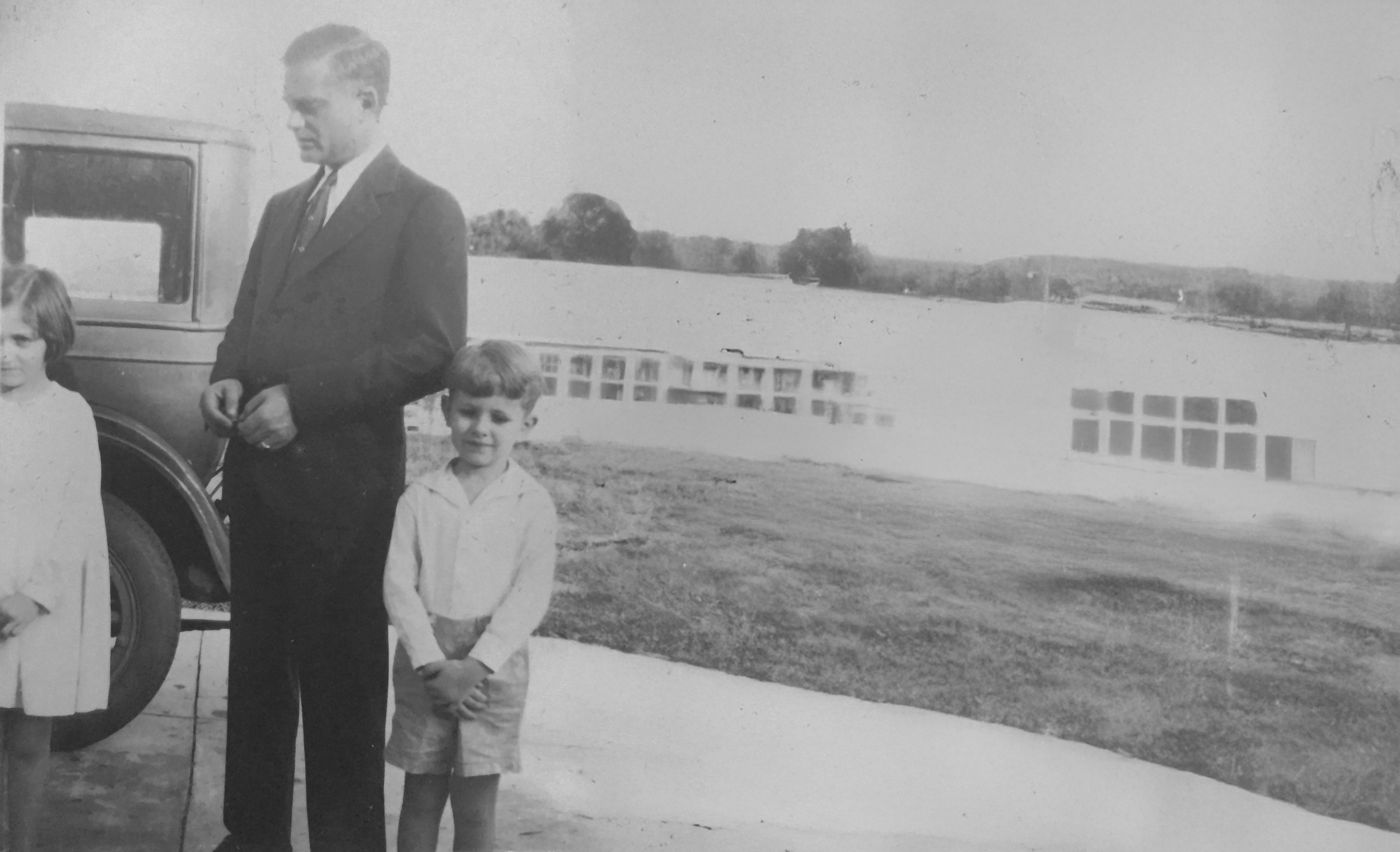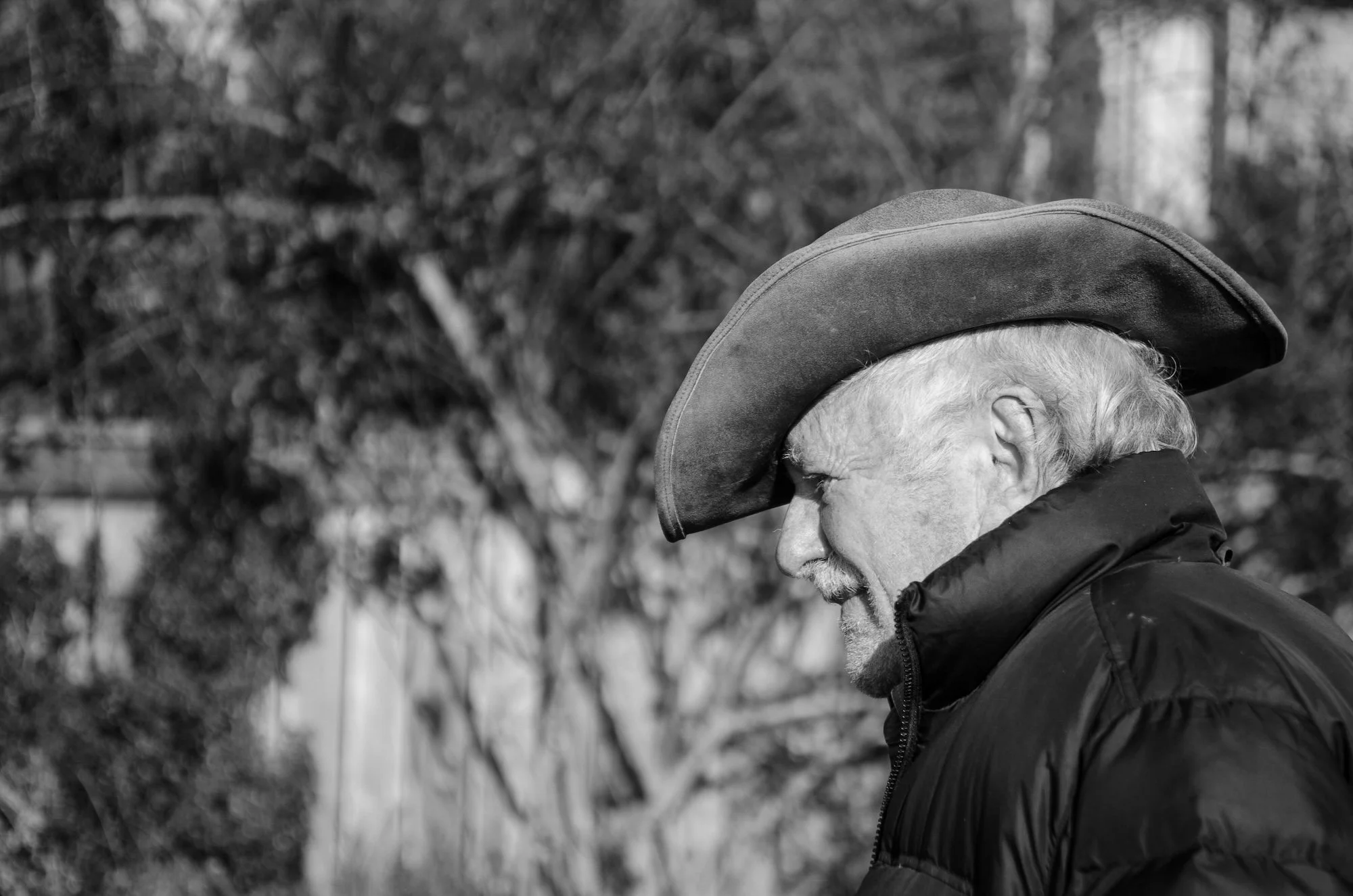
1930s
1925
Paul Harris is born on November 5 in Orlando, Florida to Dorothy Paul, a homemaker, and Julian Harris, His father, Julian, was an orange broker who also dynamited hardpan—the layer of dense ground just below topsoil.
Shirley and Paul Harris in Orlando, Florida, 1932, Paul Harris Archives
Shirley, his sister, Julian, his father, and Paul Harris in Orlando, Florida, c. 1932, Paul Harris Archives
1931
Harris’s mother dies suddenly in February. Christopher Harris, a son of Paul Harris, will observe in 2018 that the loss his father experienced “stayed with him for the rest of his life and profoundly affected his character. Over his long life, I think he unconsciously tried to heal that wound by immersing himself in artwork and embracing friendships.”¹
He and his older sister, Shirley, move to the home of his maternal grandparents.
1936
Julian Harris marries Helga Ebsen, whose father, Christian Ludolf Ebsen, owns a dance studio in Orlando. Alongside her sister, actress Vilma Ebsen, Helga teaches Harris and his sister to dance and encourages him to pursue the arts. Christopher Harris, in his eulogy, adds:
“It is not surprising that in his senior year in high school, he was voted most popular boy—also the best dancer. Those were the days of the foxtrot and the jitterbug. During the Depression he and his sister Shirley developed an intricate tap dance routine which they performed at Rotary and other clubs to make a few extra dollars to pay for the family's groceries.”²
1939
Waterboy, 1939, pastel on paper,
16 ¾ x 12 ½ inches
Self Portrait, 1942, pencil and charcoal on paper, 12 x 9 inches
Produces the vivid, high key pastel Waterboy (1939), a self-portrait. He is depicted in action, carrying a heavy bucket with an arm jutting outward for balance. “A schoolteacher,” curator and critic Leah Triplett writes in “Paul Harris: Interior Interests,” commissioned on the occasion of the artist’s centennial, “introduced Harris to his lifelong artistic medium—the crayon—when he was in the sixth grade. The waxy, colorful marks that crayons make are limitlessly varied and malleable, and over his lifetime, Harris would create innumerable drawings in crayon that have both material and graphic presence. . . . The picture itself almost appears as a contour drawing, with heavy, curvilinear lines outlining the figure’s shape, its volume implied by the heft of Harris’s shading. Though heaviness (both thematic and formal) is the dominant feeling of the drawing, the roundness of Harris’s line suggested a supple softness, presaging the subtle rotundity of his stuffed sculpture.”
-
¹Christopher Harris, “Eulogy for Paul Harris,” Paul Harris Art, 2018, https://www.paulharrisart.com/new-page-1.
²Harris, “Eulogy for Paul Harris.”
³https://www.paulharrisestate.com/journal
⁴Leah Triplett, “Paul Harris: Interior Interests,” 2025.













